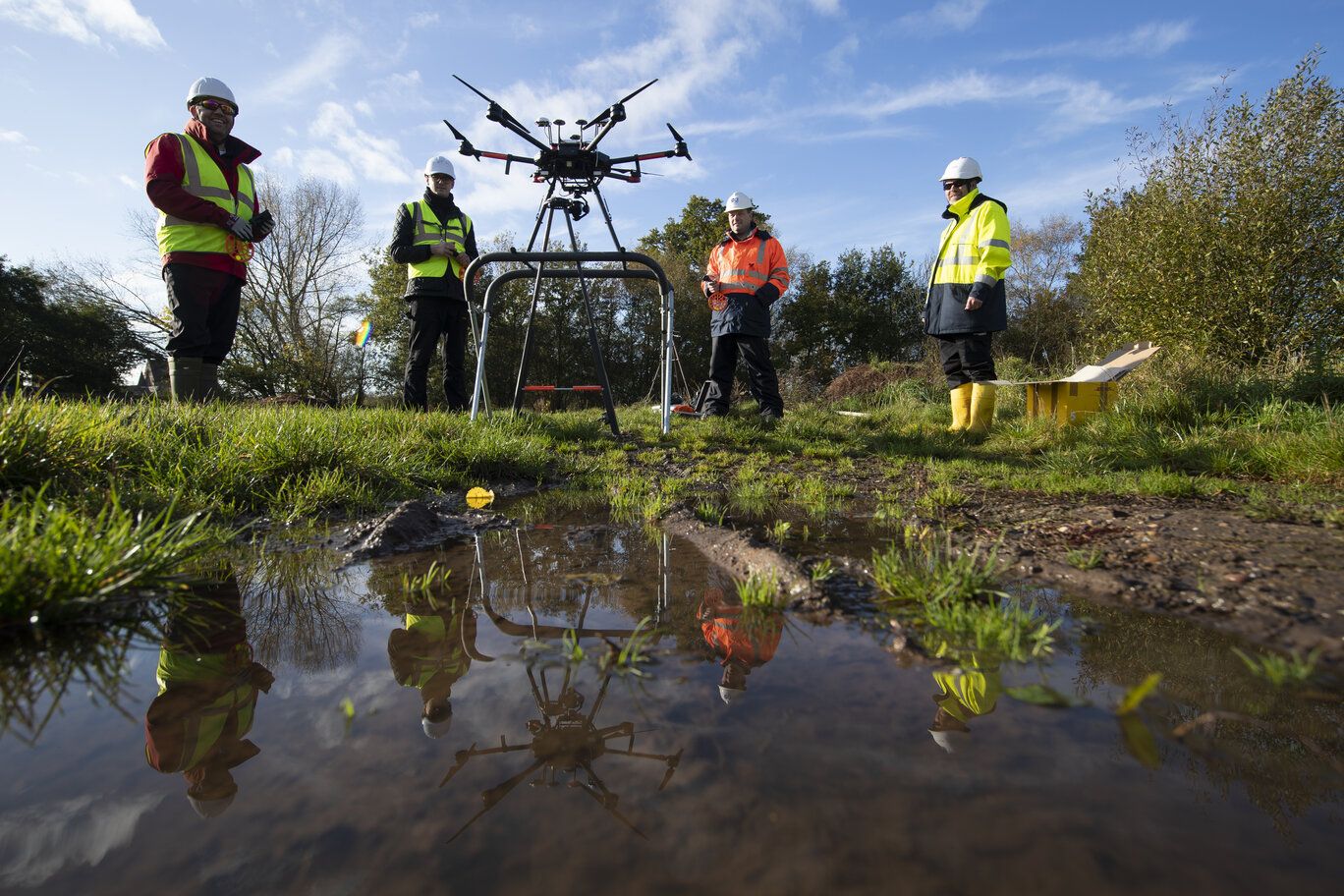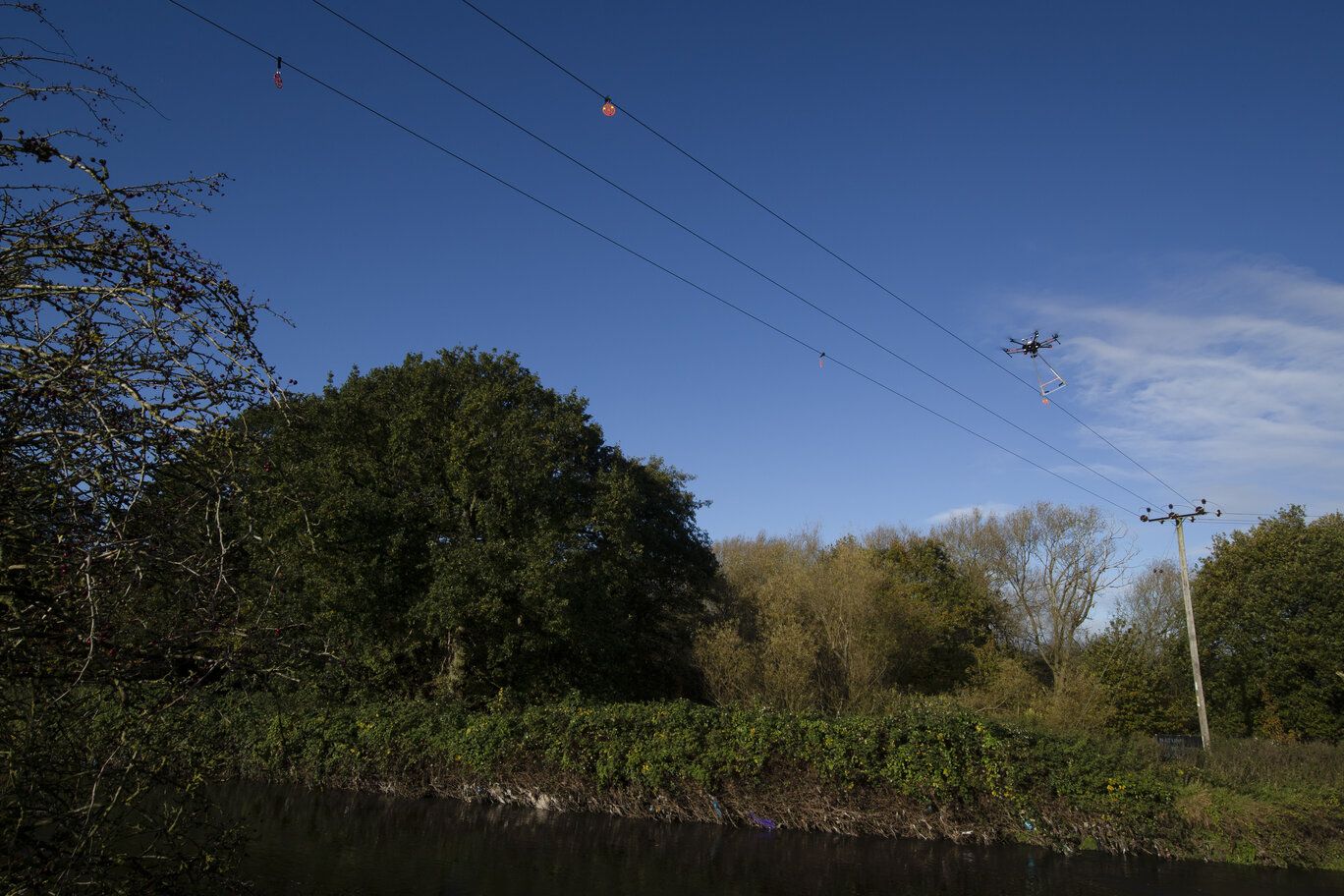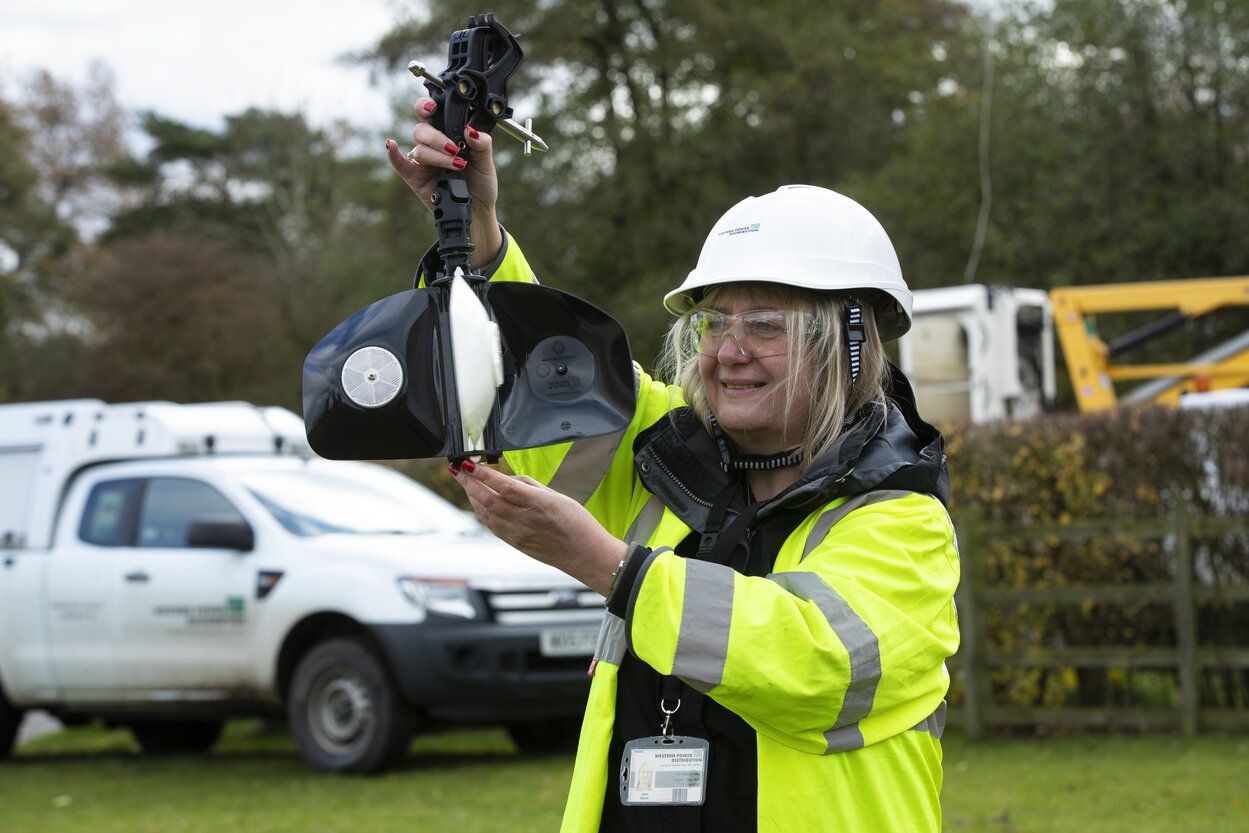Lives on the line: Drone technology heralds swan song for wildlife collisions
A revolutionary new method of installing bird diverters is making life easier for both customers and wildlife.

In a first for us at WPD, drones have been used to install bird flight diverters on a stretch of hard-to-reach overhead line in the West Midlands, reducing the risk of contact by swans and cutting the number of power cuts for local people.
In fact, this was believed to be the first time drone technology has been used in the UK to install diverters on an overhead network.
The technique was used at Coleshill in Birmingham where team manager Jane Walsh had been battling with repeated bird strikes over a section of line that repeatedly crosses the River Tame.
When overhead line policy engineer Mike Chapman suggested trialling drone technology to install bird diverters, she was more than happy to give it a go.
Mike has been leading on a national innovation project, in partnership with other members of the Electricity Networks Association (ENA), to reduce the impact on wildlife from contact with overhead lines.
The project was set up to understand the risks to overhead lines, structures and equipment from contact by local wildlife and to determine the most cost effective way of reducing the risk of future contact.

The project, which has been running for 18 months and is expected to conclude by April 2022, has identified three main forms of wildlife contact. These include birds colliding with the line, electrocution either between phases or phase to earth, and structural contact, for instance, from cattle rubbing against a pole. All of these can cause significant disruption to customer supplies, as well as extensive and costly damage to equipment and harm to the animal.
Why now?
A fault report by WPD revealed that an average of 500 incidents a year involving wildlife were recorded in the last five years, resulting in unplanned outages. This led to a business-wide request for information about problematic stretches of overhead network, which identified more than 100 sites. Of these, 15 were chosen for real network trials to test different forms of mitigation, including the site at Coleshill put forward by Jane.
Jane said: “In my patch, there is an overhead line over a river where birds regularly take off or land. We had a complaint from a customer who wanted to know why his power kept going off. It was because the birds were flying into the line and causing us to lose supplies.
“We wanted to do something to mitigate the impact for wildlife and customers but, to install bird diverters, we usually use a MEWP or live line rods to attach them. How do you do that when the line is across a river?”
Because there are currently no approved methods for installing BFDs with drones using live working techniques, it was necessary to carry out the work under shutdown conditions.
As well as Jane and Mike, the operation involved two drone operatives from Carbon 2050, who assisted with installation of the bird flight diverters over the river crossings, along with a researcher from EA Technology, which is bringing together the learning from the project to be shared across the industry. WPD Birmingham-based technician Barry Leek was also instrumental in planning the outage and liaising with other WPD staff to make the installation happen.

A small number of customers also gathered to watch the bird flight diverters installed on six separate spans of line. Two of these were river crossings where the diverters were installed by drone while the other four were put in place by a WPD overhead line team using conventional methods.
Jane added: “It was amazing, absolutely brilliant. I now have diverters on a line where I didn’t before – and where I had no idea how I was ever going to install any – and customers can see we are taking action to try to reduce the number of power cuts.”
The site will be checked at regular intervals and monitored to determine the project’s success in limiting the number of bird strikes.
In the right conditions, the drone can install up to 400 bird diverters a day.
Mike said: “As a result of the learning from the project and the trials taking place, staff can expect to see changes to overhead line policy and standard techniques and the introduction of new products that should help to make troublesome pieces of overhead network more animal friendly. We are indebted to all those who have been involved in real world trials as, without their help, we would not be able to develop suitable products.
“Thanks to these products, we’re able to improve the resilience of the network more effectively when animals do come into contact with it.”
- About Us
- Operational
